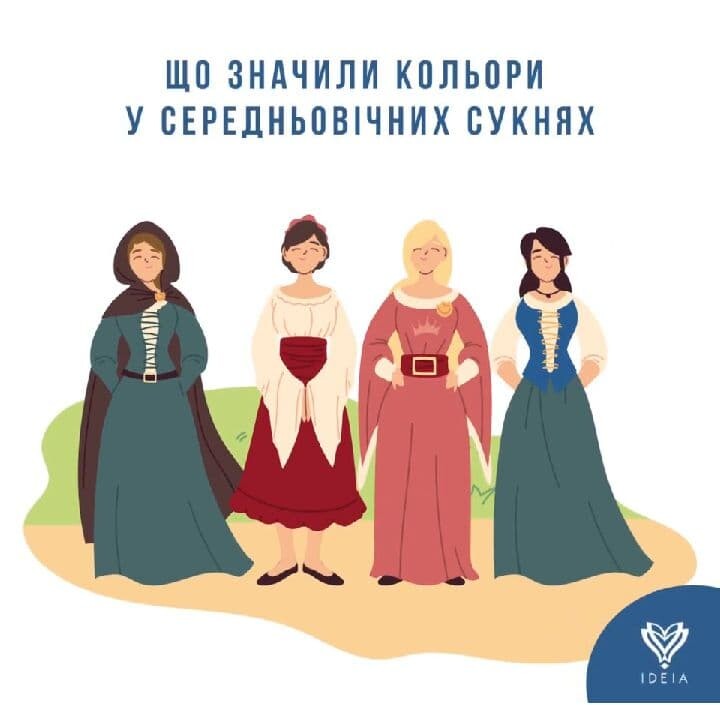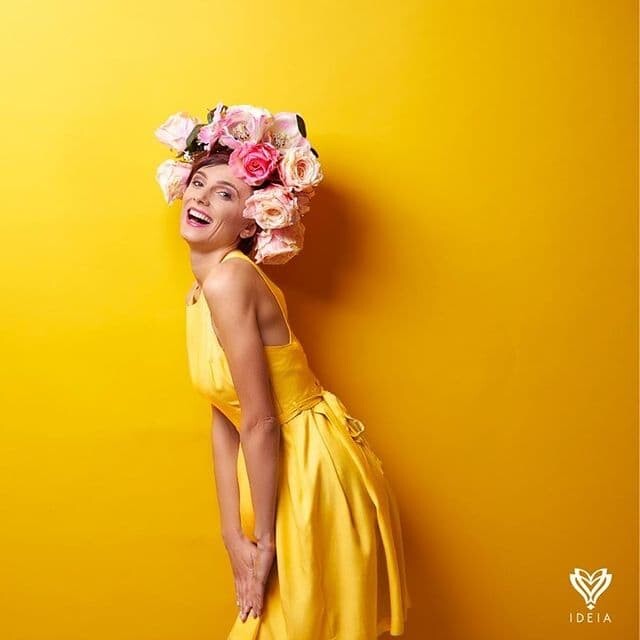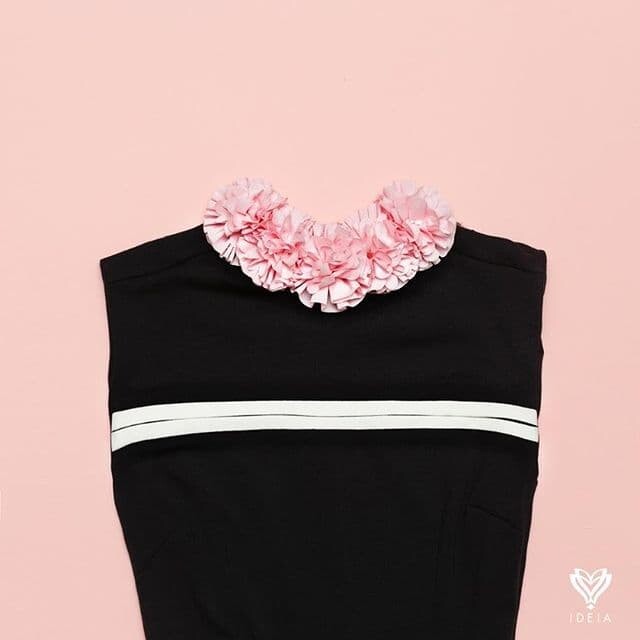 Have you ever thought about the symbolism of colors in medieval dresses? In fact, in medieval Europe there was a clear hierarchy of color. It could not be violated, and this hierarchy was influenced by a number of social, political, historical and even gender factors.
Have you ever thought about the symbolism of colors in medieval dresses? In fact, in medieval Europe there was a clear hierarchy of color. It could not be violated, and this hierarchy was influenced by a number of social, political, historical and even gender factors.
By the way, white was not in trend in medieval dresses. She considered it rather a lack of color. There were their preferences. There were colors that you will not see in clothes at all.
So red was considered a masculine color and a sign of wealth. It symbolized strength, power, rage - agree, with this interpretation it is difficult to attribute to a fragile woman. While the women put on their hands pink. This color also indicated wealth, but together with tenderness, kindness, gentleness.
Blue is a separate topic in general. Speaking of the colors of fabrics in this period, we must not forget that artificial dyes did not exist, and natural ones cost a lot of money. Therefore, only the wealthiest people could afford a physically bright blue fabric. In France in particular, the royal Capetian dynasty was very fond of this color. It is clear that there was a kind of tacit taboo on the use of blue clothes to all who did not belong to the dynasty. So, do you already understand where the legs grow in the phrase: "Blue blood"?
Also keep in mind that the fabric burned out quickly, so I had to constantly update my wardrobe so as not to look like a ragged scarecrow. This update resulted in a tidy sum of money. And ready-made clothing stores in those days simply did not exist. Imagine everyone using the services of tailors and private studios. Well, or sew yourself shirts and all the clothes yourself. The powerful dress, decorated with lace, pearls, and even where it was decorated, the rulers had to wait more than one week.
Fortunately, today there is no monopoly on color, and you can not worry about choosing blue or red. IDEIA has a great choice.
WHAT'S WRONG WITH YELLOW
 Now about the yellow color. A slight immersion in the subject revealed that in the Middle Ages it was the color of, to put it mildly, the disadvantaged. People avoided dresses of this color, because it was considered ugly, and this attitude spread throughout Europe.
Now about the yellow color. A slight immersion in the subject revealed that in the Middle Ages it was the color of, to put it mildly, the disadvantaged. People avoided dresses of this color, because it was considered ugly, and this attitude spread throughout Europe.
Yellow clothes were "dressed" for traitors in works of art. It was worn by spiders, and crazy heretics were forced to wear it. In some cities, yellow clothes or yellow badges required Jews to wear them. Later, during the Renaissance, prostitutes stood out in yellow, because it was considered the color of debauchery.
Probably something preceded this attitude to this color, but we did not explore so deeply. At the same time, we see that these prejudices are well engraved in the mind. Just mention "yellow ticket", "yellow house", "yellow tulips".
Today, fortunately, all colors are equal, and we do not meet such inflections. We do not share a person's clothes according to his social status and we can dress according to mood, preferences, fashion trends. Yellow, bright and sunny, is not considered disgusting. And that's good, in our opinion.
PEOPLE IN BLACK - HISTORY OF COLOR
 It is interesting that in different periods and in different countries of the world there was a different attitude to black. In the 13th century, clothes of dirty dark (not black) color, which quickly burned out in the sun, were painted with cheap dyes - worn by peasants.
It is interesting that in different periods and in different countries of the world there was a different attitude to black. In the 13th century, clothes of dirty dark (not black) color, which quickly burned out in the sun, were painted with cheap dyes - worn by peasants.
The first thing that comes to mind is the color of mourning. And it's not just that. Around the same time, black was declared the color of mourning. And we still tie black ribbons in mourning for the dead. The decision was ecclesiastical. Accordingly, along with the sign of mourning in black, there were such concepts as spirituality, restraint, respect. It began to be worn by monks of some orders. What we still see.
During the plague, in the middle of the 14th century, which affected the whole of Europe, wearing black was forbidden. This was due to the fact that the mortality rate was too high. Grief affected every family, and such a mass mourning had a bad effect on people's emotional state. Increased despair and despair.
But then black became a sign of wealth. Only the richest families could afford black clothes made of fabric with expensive high-quality dyes. And it became an opportunity to show luxury, but no, not to the elite strata of society at the time, but to the middle class. Remember that the rest of the colors are already occupied by the nobility, and black paint is quite expensive, so it was used by people who were actively rich in trade.
Today, black is a constant in the fashion world. From year to year it symbolizes style, sophistication, sexuality, austerity, solemnity. It seems that he will never leave his catwalk, and at the same time is the master of fashion.
That's all for now. Stay with IDEIA, we have cognitive.
You can read about the trendy swimsuits of the 2021 season HERE.
